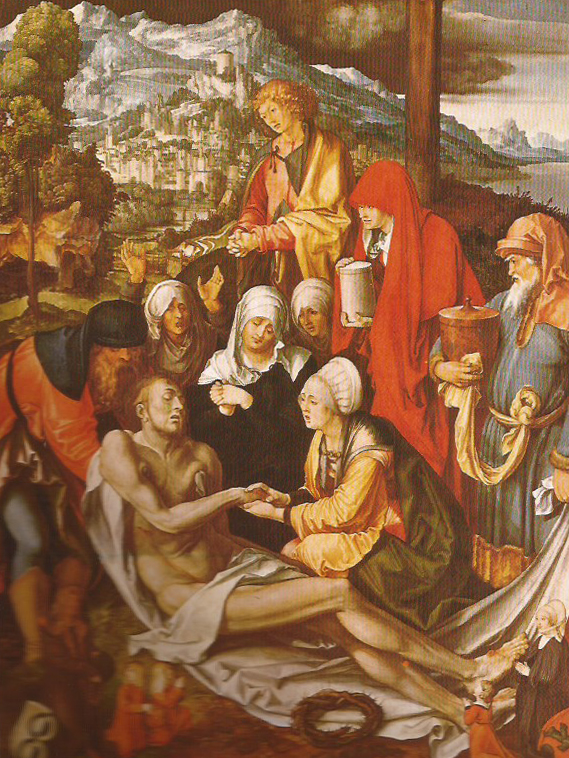Every moment of the gospels on the Passion has been represented ad infinitum and ad nauseam throughout centuries in Christian iconography, which has obviously induced guilt among the white man. (The hypothetical six million Jews killed by evil Germans are nothing more than the secularised version of the Jew killed by evil Romans.) One of these iconographic moments is the issue of descent from the cross and the contemplation of the dead Jew, as in this representation by the German Renaissance artist Albrecht Dürer, Glimm Lamentation, an oil-on-panel painting of the year 1500:
 Don’t miss the couple of pious little blond children below the figure of dead Jew.
Don’t miss the couple of pious little blond children below the figure of dead Jew.
Speaking of inducing guilt, in the Confiteor what bothered me most when I used to go to the masses was the passage mea culpa, mea culpa, mea maxima culpa (‘through my fault, through my fault, through my most grievous fault’). In the Catholic masses the faithful have to practice three blows to their chests while saying such words, every Sunday and throughout their lives. The Confiteor is so obviously a trick to induce guilt that it is worth quoting:
I confess to god almighty [i.e., the god of the Jews], before the whole company of heaven, and to you, my brothers and sisters, that I have sinned in thought, word, and deed; in what I have done and in what I have failed to do, by my fault, by my fault, by my most grievous fault; wherefore I pray god almighty [the god of the Jews] to have mercy on me, forgive me all my sins, and bring me to everlasting life. Amen.
You can see how the Judeo-Christian trick is detected when changing capital letters to small letters (‘god almighty’) and adding the proper brackets. If we now compare this religion originated by rabbis for us gentiles with the healthy Aryan religion of the Greco-Romans (see e.g., my other post today) the whole point of this site will be taken.